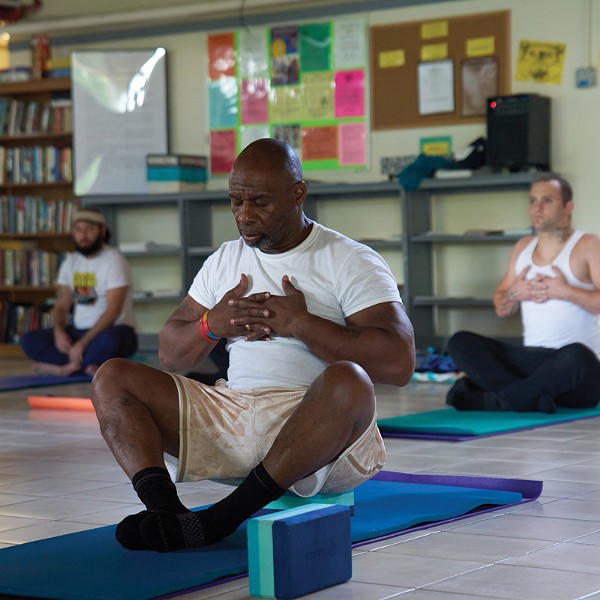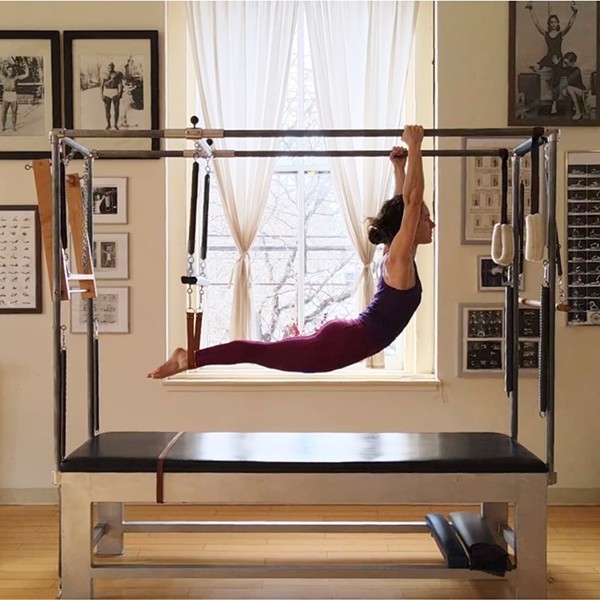Pelvic Friend: The Kegel
While in some cases surgery is appropriate and necessary, in others it's a last resort; not everyone wants to go under the knife. James, for one, felt she would do anything to avoid it—but since the pessary could not solve all of her problems, Young recommended that she see Cathy Leonard, manager of physical therapy and wellness at Northern Dutchess Hospital in Rhinebeck. Like Young, Leonard is an unusual find: She's a PT with additional education and training that gives her specialized skills in women's health and in pelvic floor wellness for both men and women. With a noninvasive approach that uses bodywork and manual therapy, she offers an alternative program to drugs or surgery that is in many cases equally effective, and side-effect free. "Even if someone does need intervention, this approach will benefit people because it will make their surgical outcome better," says Leonard. "You're already addressing some of the musculoskeletal issues that need to be working at their best if you're going to have a successful outcome."
Most women of childbearing age and older have heard of kegels—the internal exercises that involve repeated contraction and relaxation of the muscles of the pelvic floor. We have the late American gynecologist Arnold Kegel to thank for these low-level, squeeze-and-release workouts; Kegel created them in the 1940s as a nonsurgical approach to treating vaginal relaxation. Today they're a first-line defense against genital prolapse and urinary stress incontinence (i.e., leakage that occurs with jarring movements like coughing, jumping, or lifting). Dreaded by some, championed by others, kegels are the pelvic equivalent of flossing—something most women know they should do, yet often guiltily do not do. "Everybody is told, oh, just do your kegels and you'll be fine," says Leonard. "But I would say the majority of patients who come in to see me are doing them incorrectly." Common mistakes include holding the breath and failing to isolate and engage the right muscles. (Note to the misinformed: Squeezing the buttocks, belly, and facial muscles does not a proper kegel make.) First Leonard corrects these problems with coaching and often with biofeedback, which involves hooking up a patient's pelvic floor muscles to a computer so they can "see" the kegel onscreen. Then she'll put the patient on an exercise regimen that includes several types of kegels, such as the fast, pulsing kind and the slow, long-hold variety.
While kegels are a mainstay of any pelvic health program, they're not the only tool in the tool belt. For patients who have urge incontinence—which is caused by an overactive bladder rather than a weak urethra—Leonard addresses the problem with behavior modification exercises. For patients like James who experience pain during intercourse, Leonard performs manual therapy either directly or indirectly depending on what the patient can tolerate. "She stimulates the area until it eases up on the tightness, and she shows you how to relax the muscles," says James. "I was in bad shape when I came to her, and my pain has improved by about 80 percent. I am so pleased. It's pretty remarkable."
Pilates for Your Pelvis
At a local yoga studio one weekend, an instructor prompts her students to lift their pelvic floor and engage mula bandha (root lock), the yogic equivalent of a kegel. "Can you find it?" she asks. "Get out your flashlights!" With their attention on pelvic floor muscles, activities like yoga and Pilates can be a great way to build awareness and prevent problems in this entry-level area. "I tend to work with everybody on the pelvic floor," says Holland-born and Newburgh-based Pilates instructor Martina Enschede. "It's such a tabooish area, but people are so happy that they can actually talk about it and work on it." A key goal of this physical fitness system, which was developed by German bodyworker Joseph Pilates in the early 20th century, is to strengthen the "core" or "powerhouse," which includes the pelvic floor as well as the deep muscles of the abdomen and low back.
"All of these are stabilizers of the spine," says Enschede, who works one-on-one with clients throughout the Valley and who is teaching a Pelvic Floor Workshop at Euphoria Yoga in Woodstock on July 13. "The pelvic floor has a greater context—the whole body. Some 36 muscles attach to it, so when something goes wrong here, it travels up the chain—and vice versa." Since for many people the region is elusive, Enschede takes a multipronged approach. Step one is to have proper awareness, so she starts with imagery, showing her students an anatomical model of the pelvic floor. What emerges is a diamond shape with the pubic bone at the tip of the front triangle, the coccyx (tailbone) at the tip of the back triangle, and the ischial tuberosities (sit bones) forming the two wider meeting points in between. Finding these landmarks in their own bodies, students have a point of reference from which to build awareness of the region in daily life. Next comes a lesson in posture, where it becomes clear that slouching increases interabdominal pressure that can weaken the pelvic floor. Ultimately, Pilates exercises such as pelvic bridges (lying on the back with the knees bent and the pelvis lifted) help to target the region and strengthen it.

















